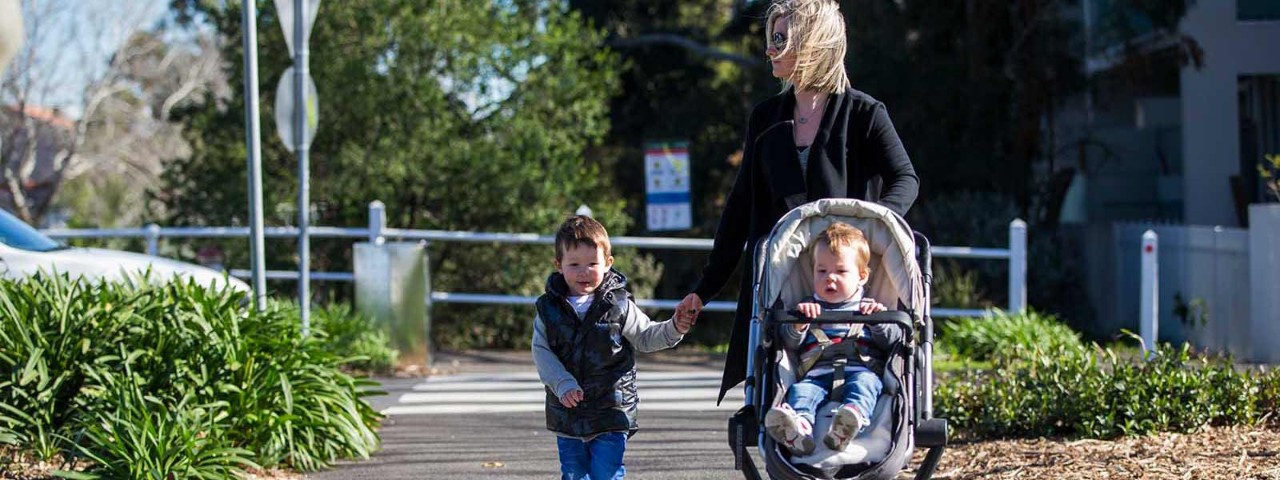Modern cars are increasingly available with safety features that help avoid crashes, protect occupants and even respond to emergencies. Here’s what to look for when buying a safer car.
Call to cut speed limits on urban streets

Pedestrian group says a 40kmh speed limit on Melbourne’s streets would save lives.
Pedestrian advocacy group Victoria Walks has called for a widespread reduction in speed limits in residential streets and other high-foot-traffic areas to save lives.
In its latest position paper, the group recommends a cut in the default speed limit on urban streets from the current 50kmh to 40kmh, and a trial of 30kmh speed limits in large residential areas.
The group’s Safer Urban Street Speed Limits paper also calls on the government to introduce 30kmh zones around the CBD, in major activity areas and near schools.
Other recommendations include new 20 or 10kmh speed limits for pedestrian priority zones such as residential streets or cul-de-sacs without footpaths, shared carparks and laneways and areas with high foot traffic but low vehicle numbers.
The group’s chief executive, Ben Rossiter, says lowering speed limits would save lives. He says while overall road fatalities have fallen over the past 20 years, pedestrian deaths on Victoria’s roads have been rising, with 48 fatalities in 2019.
He says a person hit by a car at 60kmh is likely to be killed while at 30kmh they are likely to live, with a 65 per cent chance of avoiding injury.
Yet he says Australia’s urban default speed limit of 50kmh on residential roads and 60 to 80kmh on arterial roads are “some of the highest urban speed limits in the world”.
He says analysis of Victoria’s crash statistics from 2014 to 2018 found that roads in metropolitan Melbourne with a speed limit of 60kmh or higher accounted for 77 per cent of pedestrian deaths and half of serious injuries.
Although he concedes that some of the recommendations may be controversial, Ben says the Victorian community is likely to be receptive to lower speed limits in residential areas, especially due to the increasing popularity of walking during COVID-19 restrictions.
“Walking was the biggest positive thing to come out of COVID. People were walking neighbourhood streets and the community wants them to be safe.”
He says overseas experience has also shown that communities have responded positively to lowering speed limits in residential areas.
Contrary to popular opinion, Ben says reducing speed limits would have little impact on driving time around residential areas, where trips tend to be short and the major delays are caused by traffic lights, intersections and road congestion.
RACV senior manager transport, planning and infrastructure, Peter Kartsidimas, says the Victoria Walks paper “highlights an alarming trend in the number of pedestrians and cyclists being killed on our roads”.
He says RACV strongly supports safe speed limits on roads with high pedestrian activity and on quiet residential streets, and would continue to advocate for 40kmh speed limits in school zones across Victoria.
Victoria Walks has called for a universal 40kmh school-zone speed limit, including on roads with a limit of 80kmh or higher where a 60kmh speed limit applies during school times. It also wants the government to consider introducing a 30kmh limit in school areas and extending the school zone by 500 metres from the school boundary.
“Currently school zones protect kids being dropped off at the school gate but not on their walking journey to school,” Ben says.
Lowering residential-street speed limits would not only make the streets safer for children, but also for the elderly who are 1.6 times more likely to suffer injury than younger people.
“A long-term trend over 20 years has seen an increasing number of elderly pedestrians die or suffer serious injury,” he says.
Several Victorian councils have already lowered speed limits in residential areas to 40kmh, while the City of Yarra has trialled a 30kmh limit in parts of residential Fitzroy. The council has endorsed a proposal to make this limit permanent, says Ben.
Victoria Walks has called on the government to cut red tape for councils wanting to lower the speed limit in certain areas.
/banners-and-thumbnails/Nissan-Qashqai-e-Power-ADAS-display-thumbnail-900x600.jpg.transform/imageDesktop/image.jpg)

